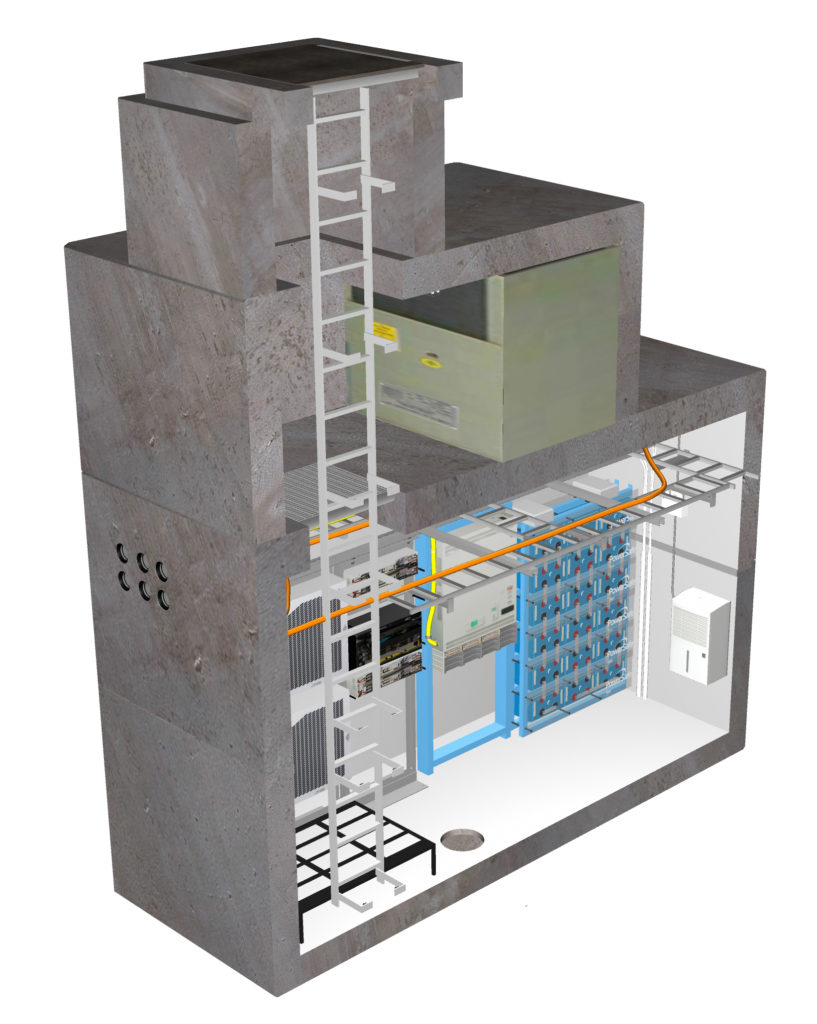Gizmobreaker1155
Member
- Location
- New Jersey
- Occupation
- Electrician
Good morning. Here's a distraction from the ongoing vote-counting. I have a sculpture to install on a lawn in an industrial park in Indiana. It features 1282 individually controlled 24vdc LEDs, on 16 messengers, all running from a single pole down to 16 footings arranged in a 52' diameter circle. It will require a computer to analyze weather data and send out the video signal to the LEDs, plus video decoders and power supplies. The nearest building is 350 conduit feet away and there is some concern that they don't have any space for my equipment, anyway. The artist does not want an above ground enclosure.
Each of the 16 strands of LEDs has 2 data lines and 2 power lines. 4 x 16 = 64 wires, 32 data (shielded) and 32 DC power. That's a lot of conduit diameter and 350' is a lot of voltage drop.
The only solution that seems to make sense is an underground enclosure for the computers and the LED drivers. All that equipment, of course, hates moisture and wants to be cooled. An open bottom enclosure will always be wet and a closed bottom enclosure would require a sump pump and a nearby dry well. Either way, there's likely to be moisture in the enclosure all the time. Everything can be enclosed in weather-tite NEMA4 enclosures but then cooling becomes an issue.
What's the best solution? Am I ignoring something obvious? I have a different installation in Florida where I used an air-conditioned SS enclosure but I was able to mount that to a building wall, close enough to avoid too much voltage drop. That's not possible, here. The artwork does not include any above ground structures other than the pole, which is only 8" in diameter. The footings are all flush with grade.
Each of the 16 strands of LEDs has 2 data lines and 2 power lines. 4 x 16 = 64 wires, 32 data (shielded) and 32 DC power. That's a lot of conduit diameter and 350' is a lot of voltage drop.
The only solution that seems to make sense is an underground enclosure for the computers and the LED drivers. All that equipment, of course, hates moisture and wants to be cooled. An open bottom enclosure will always be wet and a closed bottom enclosure would require a sump pump and a nearby dry well. Either way, there's likely to be moisture in the enclosure all the time. Everything can be enclosed in weather-tite NEMA4 enclosures but then cooling becomes an issue.
What's the best solution? Am I ignoring something obvious? I have a different installation in Florida where I used an air-conditioned SS enclosure but I was able to mount that to a building wall, close enough to avoid too much voltage drop. That's not possible, here. The artwork does not include any above ground structures other than the pole, which is only 8" in diameter. The footings are all flush with grade.


